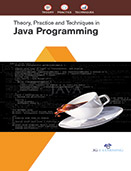Computer Science

Java is a programming language, designed to be concurrent, class-based and object-oriented, as well as a computing platform first released by Sun Microsystems in 1995. Java used to create Web applications and platforms is one of the most popular programming languages. It was designed for flexibility, giving developers to write code that would run on any machine, regardless of architecture or platform. According to the Java home page, more than 1 billion computers and 3 billion mobile phones worldwide run Java. Java is designed to enable development of portable, high-performance applications for the widest range of computing platforms possible, hence enabling the fundamental tenets of overarching accessibility as well as cross-platform interaction. Nowadays programmers have to write applications by targeting many devices and platforms. So they look for a programming language that enables them to write the application cod once and deploys the application code across multiple platforms without putting extra effort. The programmers can simply compile the Java code once into bytecode, and deploy the bytecode across many platforms without compiling the code again. The bytecode makes it easier for programmers to deploy the application code on any platform that supports Java. Also, they can easily port the application from one platform to another without compiling the code repeatedly. By making applications available across heterogeneous environments, businesses can provide more services and boost end-user productivity, communication, and collaboration—and dramatically reduce the cost of ownership of both enterprise and consumer applications. At the same time, Java is also used widely for developing mobile apps and game for Android – the mobile platform with the largest installed base. There are also a number of reasons why Java will remain important over a longer period of time.
This book “Theory, Practice and Techniques in Java Programming” delves the project-oriented approach to learning introductory Java programming skills.
This guide is invaluable to students and developers by enabling them to: